Name HMS Kenya Laid down 18 June 1938 Identification Pennant number 14 Launched 18 August 1939 Draft 5 m | Namesake Kenya Commissioned 27 September 1940 Construction started 18 June 1938 Length 169 m Beam 19 m | |
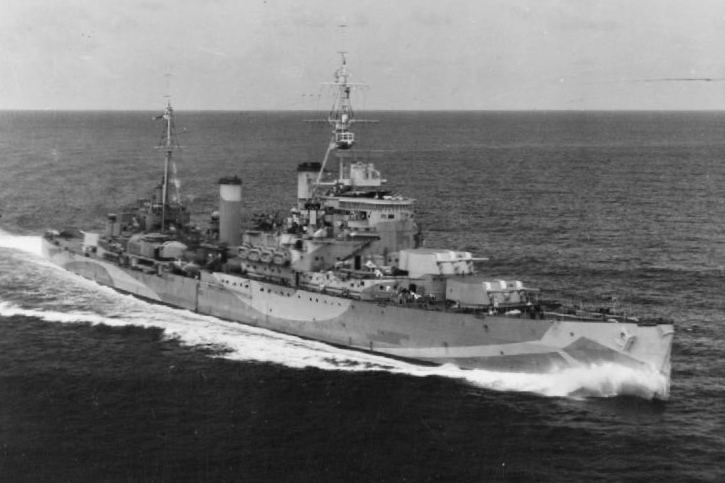 | ||
Out of service In reserve September 1958 Builder Alexander Stephen and Sons | ||
HMS Kenya was a Crown Colony-class cruiser of the Royal Navy. The ship was named after Kenya, a British possession at the time of the ship's construction.
Contents

Convoy escort
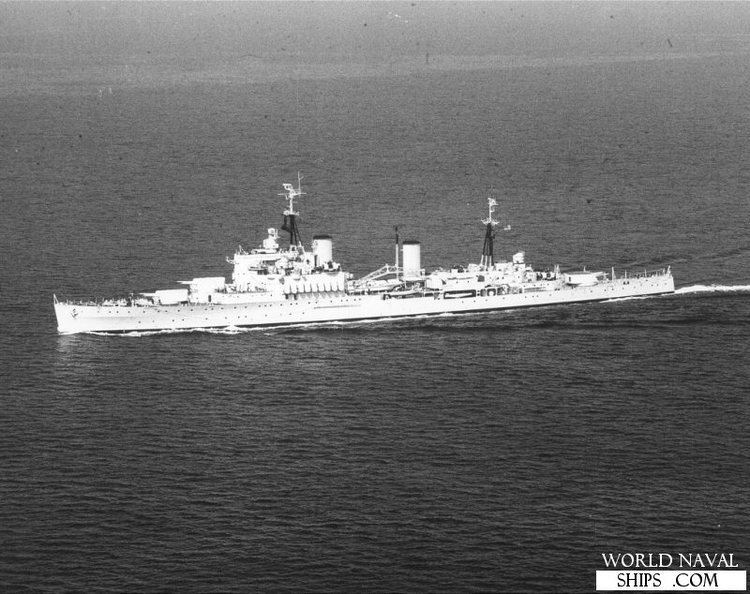
Kenya was launched on 18 August 1939 from the yards of Alexander Stephen and Sons, Glasgow, Scotland, and after a work up period, was commissioned on 27 September 1940. She took part in the hunt for the German battleship Bismarck in May 1941 whilst part of the 2nd Cruiser Squadron, Home Fleet, based at Scapa Flow. On 3 June Kenya and the cruiser Aurora surprised and sank the German supply tanker Belchen which was supplying the German submarine U-93 in the Davis Straits.
Operation Stonewall
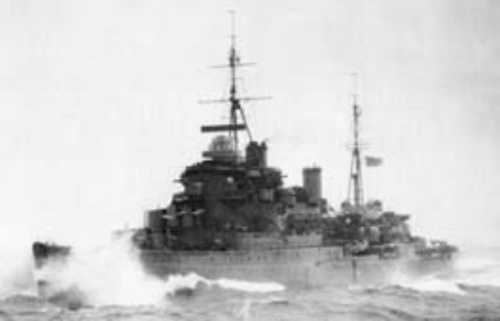
During September and October 1941, the Royal Navy devised a plan, titled Operation Stonewall, to intercept U-boats which were escorting outbound blockade runners through the Bay of Biscay, and into the Atlantic. After providing escort to the Malta convoy Halberd on 24 September on 1 October, Kenya and the cruiser Sheffield made to intercept the blockade runner Rio Grande, destined for Japan and escorted by U-204. Rio Grande escaped, but another blockade runner, Kota Pinang, was sunk on 3 October west of Cape Finisterre.
Arctic operations
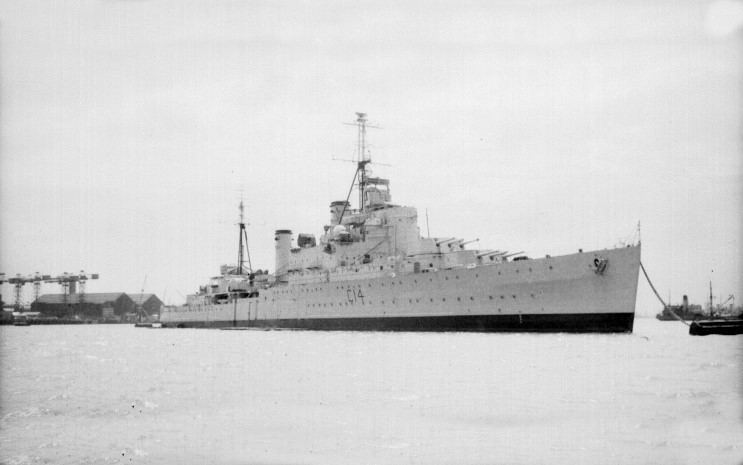
New research into declassified State Department records on the Soviet Union has revealed that on 19 March 1942, Kenya transported 10 tons of gold from the Soviet Union to the United States as payment for loans and war materials.
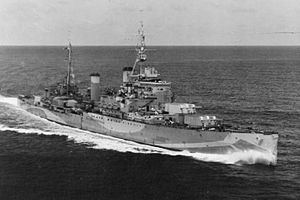
Kenya also avoided damage in air attacks by the Germans on 27–28 March. She had by now received the nickname "The Pink Lady", due to her Mountbatten Pink camouflage paint, during the commando raid against installations on Vågsøy Island off the Norwegian coast. This was attributed to her Mountbatten Pink camouflage blending in with the pink marker dye the Germans were using in their shells, preventing German spotters from distinguishing between shell splashes and the ship. The force returned to Scapa Flow in early January 1942. Kenya returned to escorting Arctic convoys between March and May 1942. On 22 March after escorting PQ12 to Murmansk Kenya was loaded with 10 tonnes of Russian bullion and took it back to Britain for safe keeping.
Post war
Kenya joined the America and West Indies Station with the 8th Cruiser Squadron in October 1946, but in December of the following year, she returned to the UK and was placed in the reserve. The cruiser had a comprehensive modernisation in 1945-6 with new standardised, twin 40 mm light anti aircraft guns and updated surface and long-range air warning radar and fire control for the anti aircraft armament. She was reactivated to replace the cruiser London on the Far East station, in 1949 after another extensive refit.
The Korean War
Kenya took part in naval operations in the Korean War. In March she bombarded Choda Island in preparation for landing 200 ROK troops there. Unfortunately the troops never showed up.
After further patrols off Inchon her next action came on 11 April when she was ordered to leave Sasebo to search for a communist aircraft that had been shot down. She was called off the operation early to sail to Kure, Japan where Captain Podger took command of the ship on 22 April. In May she took position off Inchon and spent about 10 days there bombarding the land on several occasions. The patrols and bombardments continued throughout the summer – with a trip to Hong Kong that broke the monotony – until 25 August when she left Sasebo, via Hong Kong, for a refit at Singapore. She slipped the refit jetty on 12 November and rearmed before leaving the Far East Station on 17 November. Kenya docked in Malta on 10 December and at Gibraltar three days later before entering the English Channel on 16 December.
Following the war, Kenya had an extensive year long refit in 1945-6 at Chatham with new radars and standardisation of the light anti-aircraft armament on 5 twin Mk5 Bofors and 8 single 40mm. Kenya saw service in the Korean War on shore bombardment duties. In 1953-55 the vessel refitted and spent a long period in reserve until August 1955 when she reentered service as a replacement for the cruiser Superb on the West Indian station. She paid off into reserve in August 1958, the ship was declared for disposal in February 1959 and was scrapped in 1962.
